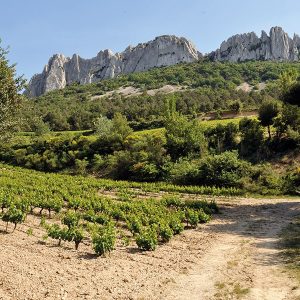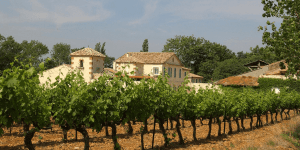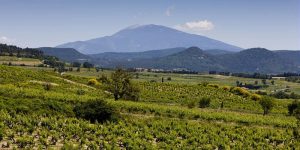Vinification and maturation: essential know-how in the production of our wines
Vinification: a process based on culture and trust
We take great care in selecting our grapes, our plots and the winegrowers we work with. Some of our partnerships have lasted as long as 25 years. Our desire is to continue to reveal the specific characteristics of the terroir, which guarantees the singularity of our wines.
We work alongside our partner winegrowers throughout the year, from the vine to the storeroom. We have regular exchanges with them, offering advice during the various stages of the growth of the vine, vinification and maturation. Our mission is to ensure that the grapes will have the quality required to produce our wines.
This work is facilitated by the fact that we are also winegrowers and producers (Domaine de Longue Toque & Château Grand Escalion), which means we speak the same language!These discussions are a constant source of mutual enrichment, helping us make high-quality wines, which respect their terroir and environment.
From harvesting to fermentation
The work begins on the land with the harvesting. Once they are returned to the cellar, the grapes are crushed (for the red wines) or pressed (for white wines): these two steps are performed to extract the sweet juice from the fruit.
The must (grape juice, skin, flesh and seeds) is then plunged in a vat for two to three weeks. This is the maceration stage. During this phase, the yeasts in the grapes begin the process of alcoholic fermentation. As fermentation occurs, sugars in the juice are transformed into alcohol.
Before moving on to the blending phase, the wine is devatted and then pressed to separate it from the marc. The first wine is known as the ‘vin de goutte’ (free-run wine) the marc is then pressed to produce the ‘vin de presse’ (press wine). These two wines may be blended or not, depending on the wine.
Blending: a delicate process
This work involves putting together two or more grape varieties from plots that are vinified separately. It requires in-depth knowledge of the grapes, which have different tasting characteristics depending on the vintage, and the proportions need to be adjusted according to the varieties. In the southern Rhône Valley, wines must be produced using blends, while in the northern Rhône Valley, wines are generally produced using a single variety.
Maturation: a tailored approach
The wine is placed in a vat or barrel and is left to rest for several weeks or months, depending on the desired profile. This phase is crucial to develop and adjust the aromas of the future wine, concentrate the organoleptic characteristics and build its structure. In particular, capturing tannins affects its colour and certain aromas. Maturation can take 45 days to several months, depending on the wine.
Our two savoir-faire: ‘négociant-éleveur’ and producer
Both in our vineyards and at our partner winegrowers, the focus is on respecting the grapes and everything that surrounds them. By understanding and harnessing the elements, we can allow the vines to express their potential and produce the best cuvées. The “signature” of our oenologists does the rest their expertise refines the raw materials!
This is reflected in the excellent scores regularly given to our cuvées by top international wine critics, for example: Gigondas “Hommage à Gabriel Meffre” 2016 – 98/100 Gigondas Laurus 2015 – 93/100.
Rubrics
Découvrez plus d'articles...

The vineyard and wine cellar in winter
What happens in the world of wine during the winter period? After the hustle and bustle of autumn, the harvests and vinification process, comes winter, a season devoted to maturation and looking after the vines.

In 2018, we will continue to strive to be a Responsible Company!
In this new year, our wish to help build a world that respects both mankind and the environment is as strong as ever. This can be seen through the number of our projects for 2018 that are closely related to our convictions as a Responsible Winery. We’re delighted to be given the opportunity to tell you about them!

Discovering the art of pairing wine and chocolate
A morsel of white chocolate, Black Forest gâteau, pieces of stem ginger wrapped in chocolate, or Mexican chicken in chocolate sauce—all very appetising, but which wine would you serve with each one? Food and wine pairings factor in a combination of elements, such as the terroir, our powers of concentration, the circumstances of the tasting session, our sense memory and more. We guide you through some of the basic principles of this fascinating world!







